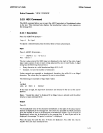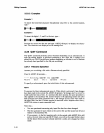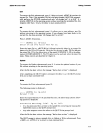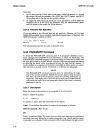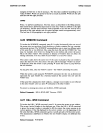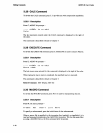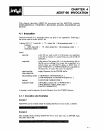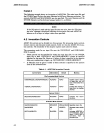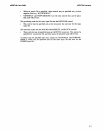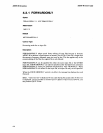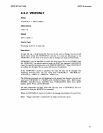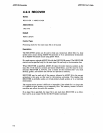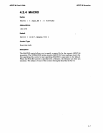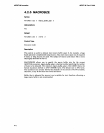
CHAPTER 4
AEDIT
-86
INVOCATION
This
chapter
describes
AEDIT
-86
invocation
and
the
AEDIT
-86
controls:
FORWARDONLY,
VIEWONLY,
RECOVER,
MACRO,
MACROSIZE
and
BATCH.
4.1 Invocation
Invocation details for a particular system are given
in
the appendixes. Following
is
the syntax used to invoke
AED
IT -86:
[ device) A E D I T
[inpuLfile
] T 0 outpuLfile I file processing_mode ]
[ recover]
[,
othe,-inpuLfile T 0 other _output file I
file
processing_mode
[ execution_mode]
where
input file
output file
other input file
other output file
is the file you want to edit.
If
a file name
is
not specified,
a new file
is
created.
It
is
named when you call the
QUIT
command.
is the name
of
the output file.
It
is
the destination file for
the
file you are editing if an output file
is
specified.
It
is
written when you call
QUIT
Update or
QUIT
Exit.
If
either
VIEWONLY
or
FORWARDONLY
is
specified for
the input file, an output file cannot be specified.
supply filenames for the
OTHER
buffer.
file processing mode
[VIEWONL
Y I
NOVIEWONLY
]
recover
execution mode
[FORWARDONLYINOFORWARDONLY]
[RECOVERINORECOVER]
[
MACRO
[ ( macro_file) ] I
NOMACRO
]
[
MACROSIZE
(macro_buffer_size) ]
[
BATCH
I
NOBA
TCH
]
A comma
is
used to separate the main filename from the
OTHER
filename.
4.
1. 1 Invocation Line Examples
Example 1
AEDIT-86 can be invoked simply by naming the file you want to edit, as follows:
Example 2
This example shows invoking AEDIT-86 with a main input file, an
OTHER
input
file, and a macro file:
4-1



